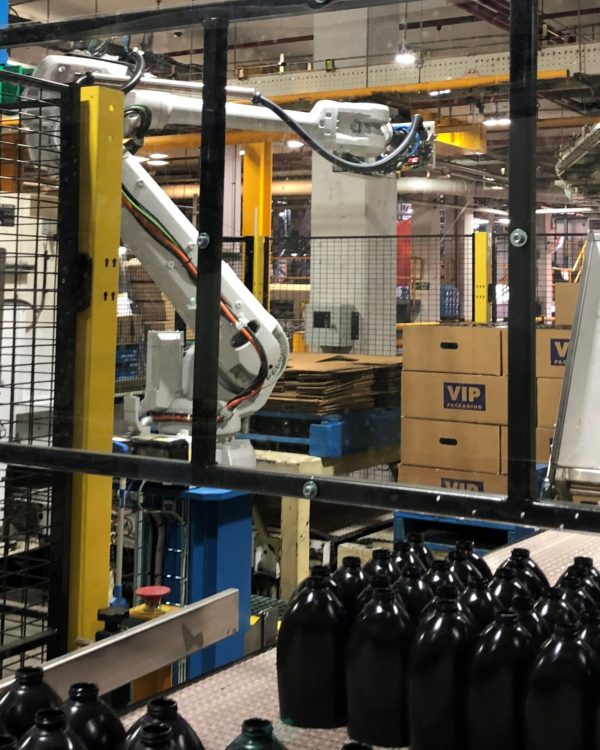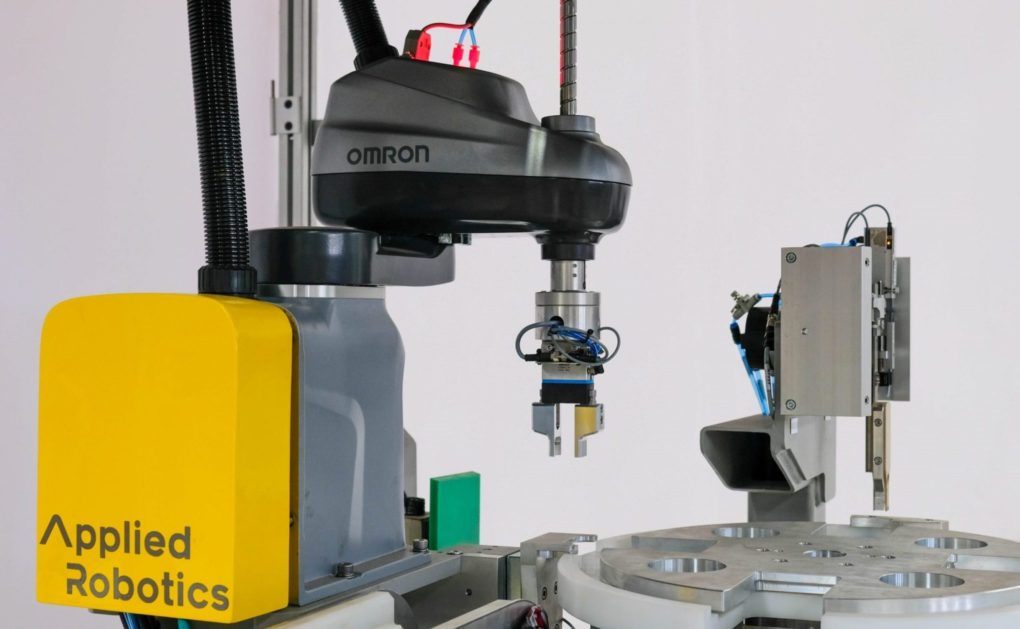There are a range of robotic options available on the market to increase the productivity of highly repetitive tasks that involve three or more movements. How do businesses know which robots are best suited to their operation and production requirements? Applied Robotics specialises in tailor made automation robotic systems to increase businesses production safety, efficiency, and reliability, whilst delivering achievable return-on-investment and payback periods. Our systems include Industrial Robots, Automated Mobile Robots (AMR) and Cobots from world renowned suppliers such as ABB, Kuka, Motoman and Omron.

Industrial Robots
In contrast to AMRs and Cobots, industrial robots do not work in collaboration with humans and require physical caging or light curtains for maximum safety. Despite needing guarding, industrial robots are faster than AMRs and Cobots because they are not slowed down by collaborative features. We have the expertise and experience to determine if an industrial robot is the best option according to the function that needs to be performed.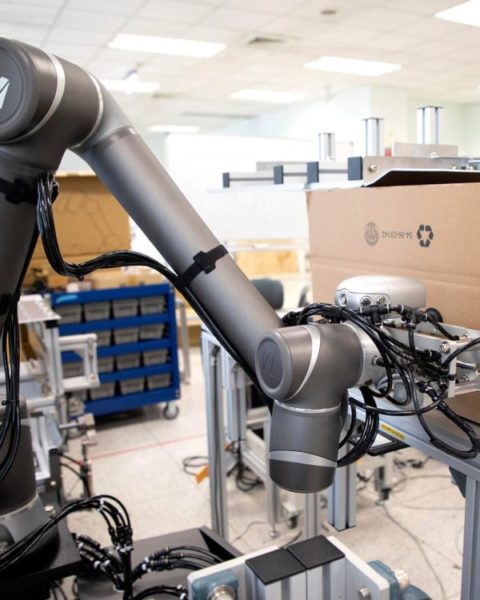
Cobots
Cobots are ideal for industrial applications with repetitive tasks, such as assembly, packaging, inspection and logistics, that are performed in collaboration with humans. Unlike industrial robots that require segregation and physical guarding, Cobots have sophisticated integrated collision detection systems that can detect collisions and quickly adjust the motor speed to prevent injury. The combination of Cobots with humans reduces costs whilst increasing efficiency and productivity.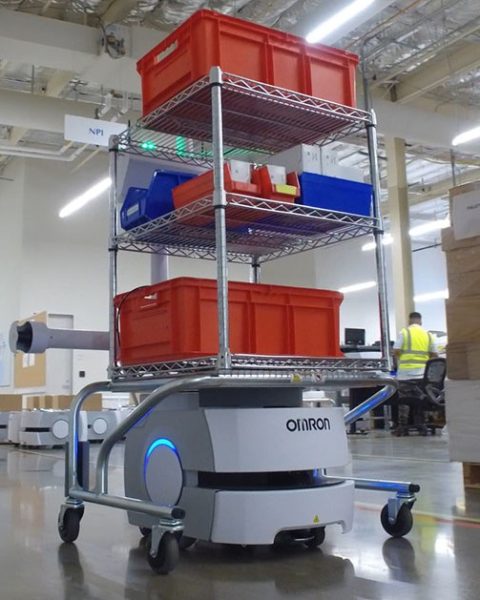
Automated Mobile Robots (AMR)
Traditionally, production equipment is not known to be synonymous with adaptability. Applied Robotics’ modular automation systems incorporate innovative and operator friendly AMRS, giving businesses the flexibility to safely adapt to changes in production. We have the experience to identify the best AMR solution for businesses material handling, as well as the technical expertise to reconfigure AMR’s efficiently and cost-effectively as their travel paths and processes evolve. To accommodate output increases and changes in production lines, fleets can be supplemented with additional AMR’s.ROBOTIC INTEGRATION 3-STEP PROCESS:
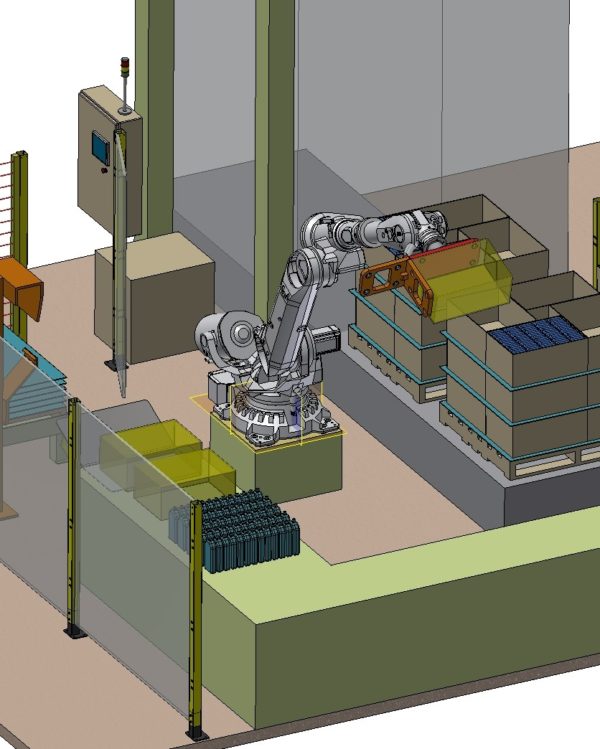
Step 1. Design
We visualise and test the validity of multiple robotic concepts using 3D CAD mock-ups, simulations and cycle-time analysis. During a presentation we reveal our final concept, outline how the world-renowned technology that it incorporates works and answer any questions clients may have. Clients also receive a comprehensive written concept proposal and quote.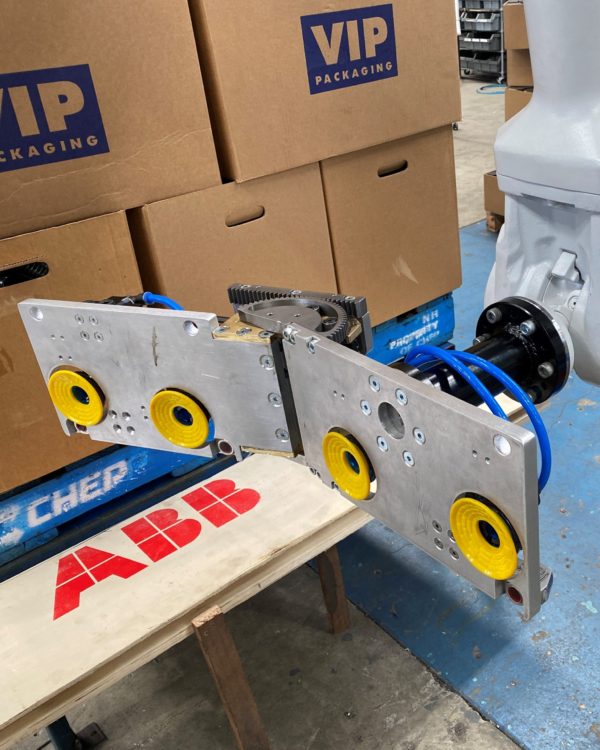
Step 2. Manufacture
Key mechanical and electrical engineering details are drafted to facilitate the fabrication and assembly of mechanical parts and electrical wiring. Robotic software is developed and programmed in accordance with the Factory Acceptance Test (FAT).